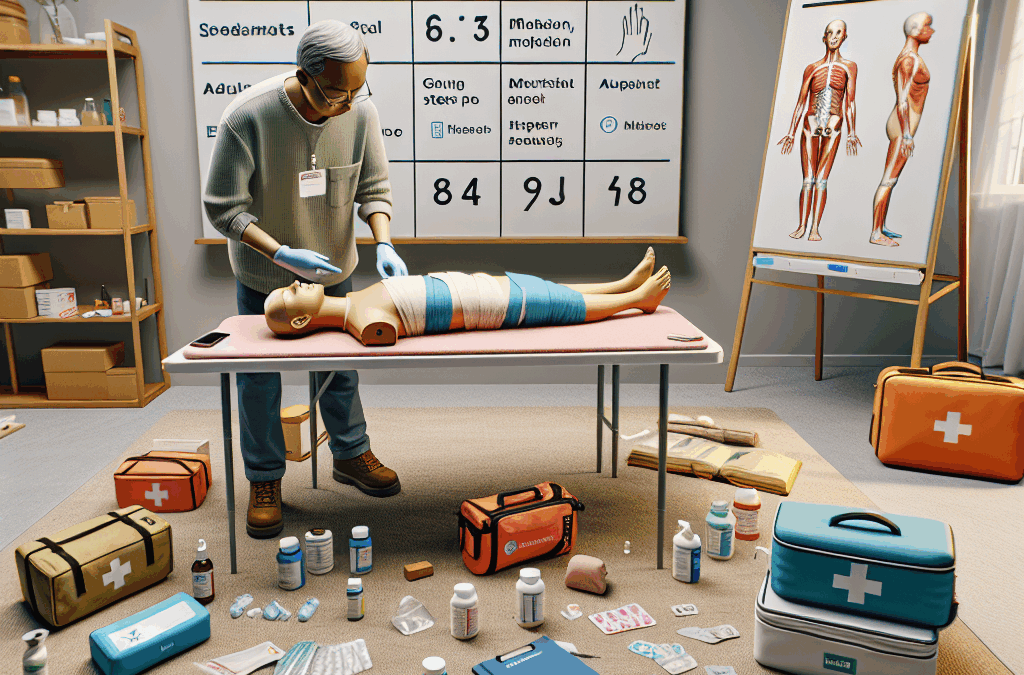Assess Your Environment
Understanding Risks in Your Area
Alright, let’s kick things off by taking a good look around. Every home, neighborhood, or workplace has its unique risks. It could be anything from natural disasters like floods or earthquakes to man-made emergencies like accidents or health crises. Wherever you are, understanding what could potentially happen is the first step in preparing yourself.
I’ve spent some time mapping out the risks in my area, which has really opened my eyes. For example, if you live in a flood zone, it’s super important to know the routes out of your neighborhood. On the other hand, if you’re in a busy city, being aware of medical facilities nearby can really save you in a pinch.
Once you’ve figured out the specific risks, it’s time to adjust your emergency plans accordingly. This way, you’re not only preparing for the big stuff but also considering the smaller things that can happen any day, like an unexpected allergic reaction or a minor accident.
Building an Emergency Kit
Gather Essential Supplies
Your emergency kit is basically your lifeline in a crisis. I remember the first time I built mine; it felt like I was preparing for a camping trip. You want to include basic medical supplies—think first aid items like band-aids, antiseptic wipes, and whatever you need for specific conditions, like an EpiPen if you have allergies.
It’s also smart to have items like a thermometer, scissors, and tweezers in there. I was super glad I had these when a friend got a splinter during a hike. A well-stocked kit can help treat minor injuries and prepare you for any unexpected health emergencies.
Don’t forget to include any personal medications you might need, as well as emergency contact numbers. I’ve also added items like hand sanitizer and gloves for those times when things get messy—trust me, you’ll thank yourself later!
Thank you for reading this post, don't forget to subscribe NOW for FREE!
Training in Basic First Aid
Why First Aid Training Matters
So, here’s the deal—having supplies is great, but knowing how to use them? That’s where the real magic happens. I remember my first aid class: it was a game changer. The confidence boost I got from learning how to handle common scenarios really helped, especially during a family picnic when my cousin sprained her ankle.
Training in basic first aid equips you with skills to handle minor emergencies effectively. You’ll learn how to assess a situation, provide proper care, and even when to seek professional medical help. Plus, it’s a chance to connect with your community by sharing knowledge and resources.
Check your local community centers or hospitals for classes. Nowadays, you can even find online courses that fit into your schedule. The key is to stay sharp and keep your skills fresh. You never know when that knowledge will come in handy!
Creating an Emergency Plan
Steps for a Solid Plan
The beauty of having an emergency plan is the peace of mind it brings. Believe me, once I sat down and mapped it out with my family, everything felt much more manageable. Start by identifying your emergency contacts and setting a family meeting point in case you get separated.
Next, keep communication lines open—smartphones are great, but if the grid goes down, you might need a backup. Consider using walkie-talkies or agree on a friend’s house as a rendezvous if things go sideways. Having a solid plan means everyone knows what to do, making stressful situations a bit easier to handle.
Make it a fun activity! Instead of it being a chore, turn it into a family bonding experience by practicing drills. It sounds nerdy, but trust me, practicing can actually make you feel more comfortable for the real thing.
Staying Informed
Resources for Staying Updated
Last but definitely not least, staying informed is critical. I can’t stress enough how important it is to know what’s happening in your community, especially regarding health alerts. Subscribing to local news or following health department updates can keep you in the loop.
It’s also a good idea to follow medical organizations and listen to podcasts or read articles that focus on health and emergency preparedness. I’ve found that keeping these resources close at hand helps me feel a bit more in control when things get chaotic.
Lastly, don’t underestimate the power of engaging with your local community. Networking with neighbors can provide practical tips, resources, and support in case of emergencies. Together, you can form a community of safety, and that’s worth its weight in gold.
Frequently Asked Questions
1. What should I include in my emergency kit?
Your emergency kit should include basic first aid supplies, personal medications, a flashlight, batteries, and any water or food that won’t perish quickly. Make sure to tailor it to your family’s specific needs!
2. How can I find a first aid training course?
Check with local community centers, hospitals, or even online platforms. Many organizations like the Red Cross offer courses both in-person and online that are very convenient.
3. How often should I review my emergency plan?
It’s a good idea to review your plan at least once a year or whenever there are changes in your family dynamics or living situation. Keep it up to date so that everyone knows their roles.
4. Are there apps available for emergency preparedness?
Yes! There’s a plethora of apps designed to keep you informed and help you manage emergencies. Some even connect you to local resources and alerts, making it easier to stay prepared.
5. How do I stay calm during an emergency?
Staying calm can be challenging, but having a plan in place makes a world of difference. Practice your emergency responses and remember to breathe deeply. Keeping a clear head will help you make better decisions.






